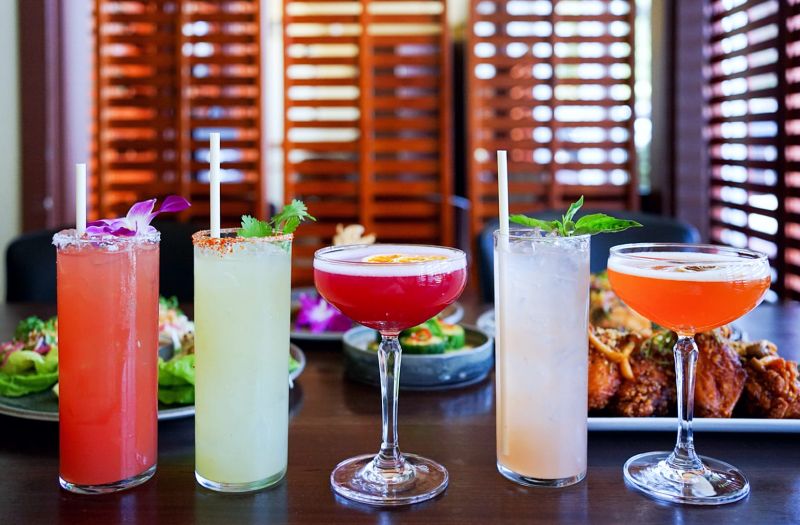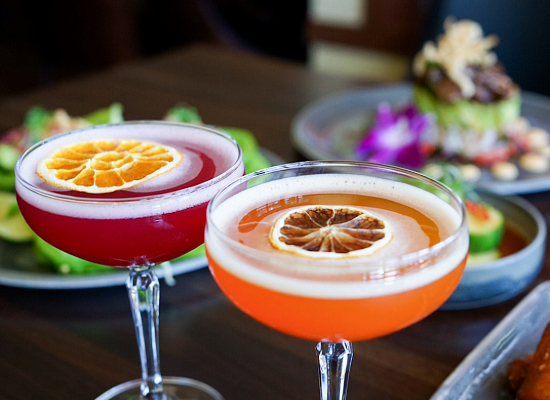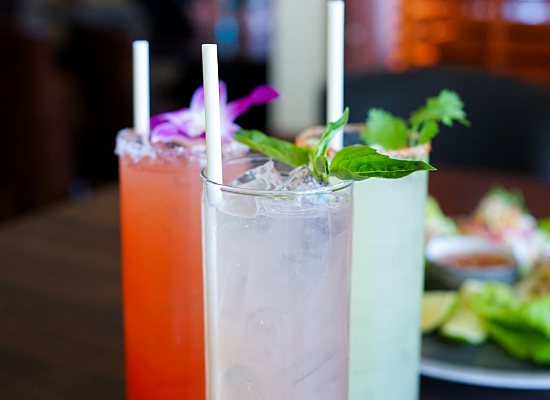Educating Bartenders Worldwide.
By Beverage Trade Network

In recent years, the food and beverage industry has seen some fascinating trends reshape what consumers seek and expect from their dining and drinking experiences. While premiumization and sustainability have gained significant traction, there’s another emerging trend poised to revolutionize the sector: cultural assimilation in cuisine, particularly with a focus on Asian influences. Here, assimilation doesn’t mean simply adapting to new customs or cultures, but rather embracing and integrating the flavors, ingredients, and culinary philosophies that resonate with international consumers, especially younger audiences.
The boom of Korean and Japanese influences, largely driven by the popularity of K-pop, anime, and other cultural exports, has led to an unprecedented curiosity about Asian customs, practices, and, of course, flavors. For many, the journey into this world starts with familiar experiences—trying instant noodles or experimenting with recreating dishes seen in films and dramas. But it doesn’t stop there. Enthusiasts are exploring the art of Asian-inspired cuisine and even diving into the realm of bespoke Asian cocktails.
This growing fascination with Asian flavors has given rise to an exciting new niche within mixology: Asian-inspired cocktails. What began with a fondness for lychee martinis in the 1990s has now blossomed into a nuanced and creative movement, featuring everything from exotic fruits to bold spice blends and unconventional ingredients like gochujang, yuzu, matcha, and more. And far from being a niche interest, the consumer demand for these flavors is on the rise, adding vibrancy and diversity to cocktail menus worldwide.

Image Credits: Bar Dojo
“I see umami-rich ingredients coming into play more frequently. They certainly add a unique depth of flavor, which many guests enjoy,” says Vanessa Robinson, General Manager at Bar Dojo, an Asian fusion restaurant located in Edmonds, Washington. Known for its innovative cocktails, Bar Dojo uses a range of Asian-inspired ingredients to create unique, handcrafted drinks that add a new dimension to liquid dining. Robinson adds, “I’ve really enjoyed experimenting with different types of seaweed and mushrooms in our cocktail program.” This embrace of unique, umami-rich ingredients reflects a larger consumer shift towards savoring complex flavors that offer depth and intrigue.
According to data from Numerator, there has been a 20% increase in the purchase of Asian ingredients and exotic fruits, reflecting the broader interest in this flavor profile. Two especially popular ingredients are lychee and yuzu, both of which bring a distinct and versatile character to cocktails. “Lychee lends a delicate, almost tropical flavor that pairs exceptionally well with lighter spirits like gin and vodka, while yuzu offers a bright, citrusy tartness, making it an ideal substitute for traditional lemons or limes,” Robinson shares.
Yet, while innovation undoubtedly draws consumers in, crafting Asian-inspired cocktails is not without its challenges. Striking a balance between creativity and respect for traditional ingredients and flavors can be tricky. Without careful attention, the desire for novelty risks overshadowing the cultural heritage these flavors represent. Bar Dojo’s popular cocktail, the Shiso Lovely, serves as a prime example of respecting tradition while pushing the boundaries of mixology. This drink incorporates a house-made shiso tincture, a shiso and sencha (green tea) syrup, gin, lemon, coconut milk, and egg white (or aquafaba for a plant-based twist). Shiso, an aromatic herb popular in Japanese cuisine, provides a distinct flavor profile that complements the other ingredients, creating a balanced cocktail that’s both refreshing and evocative of Japanese flavors.
“We try to incorporate fresh, local ingredients whenever possible,” Robinson explains. “We are fortunate to work with a great Asian food vendor who supplies unique products. For example, we’re currently using Mishirasu Asian pears in one of our cocktails.” This dedication to fresh, authentic ingredients not only enhances the quality of the drinks but also aligns with the growing demand for sustainability and transparency in sourcing.
[[relatedPurchasesItems-31]]
There’s little debate that Asian-inspired cocktails have earned a well-deserved place in the modern bar scene. The trend is not only apparent in bars and restaurants but also in the commercial sector, with a growing number of ready-to-drink (RTD) options featuring Asian flavors hitting store shelves. This is a welcome development for those constantly on the lookout for new flavors and combinations, as it offers consumers convenient ways to explore the world of Asian mixology from home.
However, despite this growing interest, some consumers remain hesitant to try unfamiliar ingredients, often due to preconceptions or a lack of knowledge. “A challenge we face is with guest familiarity around certain ingredients. Often, guests shy away from ordering something if they don’t recognize the ingredients,” Robinson notes. “Sometimes, it’s my first time working with a particular ingredient too, so finding the right flavor profile and balance can be a learning curve. It might sound great in my head, but when I actually put the cocktail together, the result can be completely different,” explained Robinson while talking about the flip side that Asian-inspired cocktails bring. This candid insight highlights the creative risks and experimentation involved in crafting Asian-inspired cocktails, as well as the importance of educating consumers to bridge gaps in familiarity.
Despite these challenges, the future looks bright for Asian-inspired mixology. Since the lychee martini craze of the 1990s, Asian ingredients have steadily integrated into cocktail culture, and it seems there’s still plenty left to explore. Asian cuisine is rich with a tapestry of flavors that go far beyond the favored options like yuzu and matcha. As more bartenders and mixologists experiment with these flavors, they are discovering new possibilities for incorporating lesser-known ingredients into their creations.

Image Credits: Bar Dojo
When asked about lesser-known Asian ingredients that might make great additions to cocktails, Robinson shared, “It’s not so much about the lesser-known ingredients, but rather those that are lesser used. There are so many types of fermented bean pastes, like miso, doenjang, gochujang, and even red bean paste. Each one has its own complex flavor profile. I often think about how I could take a familiar dish and reinterpret it as a cocktail. These ingredients can be an incredible starting point for that kind of creative thinking.”
As Asian-inspired cocktails continue to grow in popularity, it’s clear they offer more than just novelty. These drinks invite consumers into an experience that’s both sensory and cultural, fostering appreciation for the nuances of Asian cuisine and its diverse ingredients. What’s more, the popularity of these cocktails speaks to a broader cultural shift—an openness to explore, to blend traditions, and to celebrate the richness of flavors from around the world.
The rising trend of Asian-inspired cocktails reflects more than just a fleeting interest; it embodies a deeper curiosity and respect for Asian culinary traditions. As more people become open to experimenting with flavors, the opportunities for innovation in this space will continue to grow. With the right balance of tradition and creativity, Asian-inspired cocktails have the potential to transform global cocktail culture, making it richer, bolder, and more inclusive.
Header image sourced from Bar Dojo.
Related Links:
Building Buzz For Brands & Bars: Activations And Marketing In The Beverage Industry
America’s Top Bartenders and Hospitality Buyers to Judge 2025 Bartender Spirits Awards